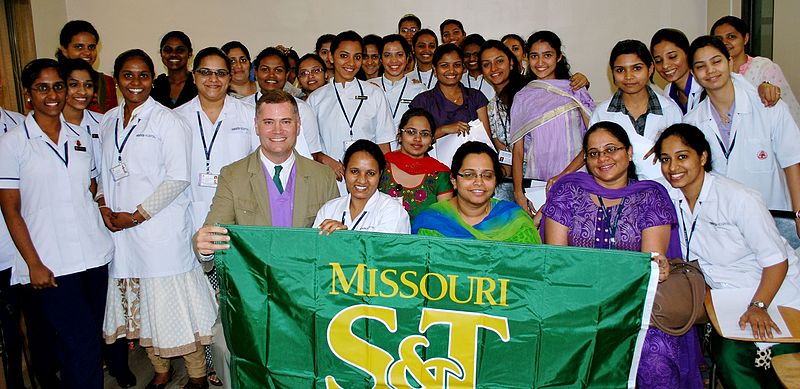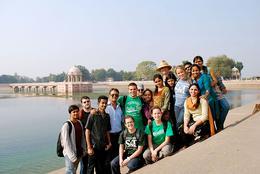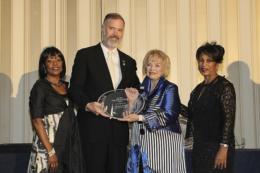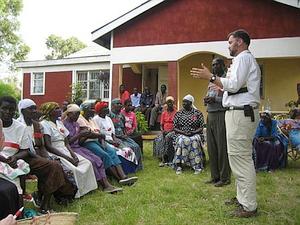Society's new committee member returns to talk about the appeal of environmental engineering for young people.

In part two of our interview with new Society environmental sector committee member Professor Daniel Oerther, we talk about diversity in the profession, how universities differ in their approaches to teaching engineering students, and why a career in environmental engineering is becoming more attractive to young people.
Diversity
In the US, like the UK, a lack of diversity in engineering has contributed to a shortfall of engineers. And much like the UK, many engineers in the US come from a specific demographic, mostly made up of white men, who are historically more attracted to the way the profession emphasises mechanical problem solving.

The engineering community has recognised that to deal with the shortage from other demographic groups means changing the narrative around the profession. Environmental engineering is becoming a more appealing career choice for the younger generation because, in part, it deals with issues that young people care about, such as climate change and equality.
“We have to do a good job to make engineering more open to non-traditional students including women and people of colour, and that is where the projects I do can help. When I first started, my kind of environmental engineering was to build a water plant or sewage works, and I know how to do that. But I’ve moved into another space: the reason we built sewage works was to clean up people’s waste, but these villages in Guatemala, for example, don’t need us to exclusively focus on sewage works. They need their corn to be better, so they’re not stunted,” said Daniel. “I’m still doing engineering, but I’m answering a different request from my client.”
The UK government has started to put money into diversity campaigns and has pledged funds towards university scholarships and apprenticeship programmes to create a profession that is more inclusive. Slowly the image is changing, but there are cultural factors, too, that influence decision making.
“The US and UK both have interesting demographics and we have them for different reasons. Because of commonwealth and the history of empire there is diversity in the UK, and in the US immigration and slavery have contributed to our diversity, so both countries have these issues. Part of this is cultural; in the US, the problem may be: if you’ve been in US for a couple for generations - your grandparents came or great grandparents came - then there may be less incentive to work hard and more incentive to expect someone to give something to you.”
“Ever since 9/11, the US has been cutting down on immigration because of the fear of terrorism. We are now 20 years into those cuts, and the US has really suffered because we haven’t had a very pro-immigration policy, so we have increasingly more people ‘born here’, rather than ‘came here’. Historically, the US was described as a land of opportunity, so if you immigrated here – particularly if you came to university – you came as a hard-working, smart person looking for opportunity. And typically, you were willing to work really hard. So, a lot of immigrants came from countries such as India and China, and some came to study engineering. If you look back to the US in the 70s, 80s and 90s, a significant proportion of international students at universities were from India and China, and they came to study engineering,” said Daniel. “And that was beneficial to the quality of the work force and to the quality of engineering in the US. The passion of hard-working immigrants helped make everyone better.”
Environmental engineering

Many of the projects that Daniel spoke about in part one demonstrate how modern engineering, where creative solutions are used to solve often long-term environmental challenges, is changing lives for the better.
An initiative to promote sustainable fishing and the protection of endangered marine habitats (COAST) and a route out of a subsistence agriculture poverty trap (Guatemala), explore how engineering can complement existing practices when placed in the hands of communities facing hardship.
Daniel prefers to call the role he and his engineers take as ‘accompaniment’ rather than ‘development’. They look at the problem, and, rather than install a new plant that would supply fresh water, instead help implement systems that empower people to have better livelihoods.
“These fishermen in the Caribbean (COAST), don’t really need a drinking water plant; what they tell us that they need is a system that lets them do a better job managing their own fishing. So, I’m doing environmental engineering in solving 21st century problems, which means it’s not just the mechanics – not just the white male – so I get more diverse students interested in what I’m doing. It’s still engineering; I’m using math, first principles, and I’m iterating in my solution, so I’m doing everything an engineer would do, but the systems I’m working on are less mechanical. And we’re human, so that makes it different,” said Daniel.
“This whole notion of development: we’re the ‘developed world’ and they’re the ‘undeveloped world’, and we’re going to ‘fix them’. That impression of superiority – I hate it because it’s so wrong. We just happen to be born with a bit more material wealth and opportunities for better education. We have to be humbler than we have been. I’m not debating the politics of paying reparations and post colonialism and feelings of guilt; I’m just talking about engineering with more humility, more empathy.”
University education
“My own education was at universities that some would characterise as ‘elitist’. That type of learning may not be very practical; you end up training people who don’t finish with as many practical job skills. You are generally an educated person, and because you started well-read and accomplished you end up that way,” said Daniel.

“The schools where I’ve taught, I would characterise as much more focused on serving the masses. Mums and dads work hard to send their kids to university; kids want a good job, so it’s not a trade school but it’s closer to trade school than the elite universities. The model is very different between the two; the practical university and the elite. Some very practical universities really promote cooperative education: every student goes out to a company and they spend one semester in class and one semester working. They go back and forth between the company and the classroom. There are many universities in US that do that, and students learn on the job. It’s a powerful tool because students are getting practical knowledge while they’re working. The downside is that some students ask, ‘what’s the point of this class,’ or make comments like, ‘this class is stupid’. Well, maybe for that person, you don’t know you’ll be in exactly that job. So, some classes have lots of benefits, but the system also has its problems.
“And some universities really promote experiential learning; it’s similar to cooperative education but fundamentally different. For co-op, you go to work in a company; for experiential, you work on projects, but those projects are primarily at the university. So, students do things like build full size cars and race them in competitions against other universities. The students aren’t going to visit Rolls Royce to see an assembly line. They’re going to hand-build a car. They’re not getting the same real-world experience, but they are getting the experience in a practical team. From first-hand experience as a teacher, I’ve seen both approaches work, but in co-op, you’re just giving them more practical knowledge because of their training the workplace,” said Daniel.
“Of course, all of these are just my own personal opinions on the world as I’ve experienced it. And that’s an important part of the ‘art’ of engineering. Yes, we use math and physics and chemistry to build things and solve problems. But we also use the preferences of our clients. Engineering isn’t just a technical profession. There’s a lot of real-world practical knowledge, of getting to know and work with people, that makes engineering a rewarding profession. And in environmental engineering especially, my experience has been that the opportunities to accompany people creates the kind of attractive work conditions that welcome diversity among all demographics. We’re changing, we’re improving the profession so that it emphasises mechanical problem solving and the skills of working with people.”
To join the environmental professional sector, or to find out more about the support offered by the Society, email: [email protected]
Images: Top to bottom: Daniel poses with nurses at the PD Hinduja Hospital in Mumbai India.
Daniel with students during a study abroad trip to Gujarat, India.
Daniel receiving the 2019 NLN Lillian Wald Humanitarian Award.
Daniel facilitating a community discussion about drinking water in Otho Abwao, Kenya.

